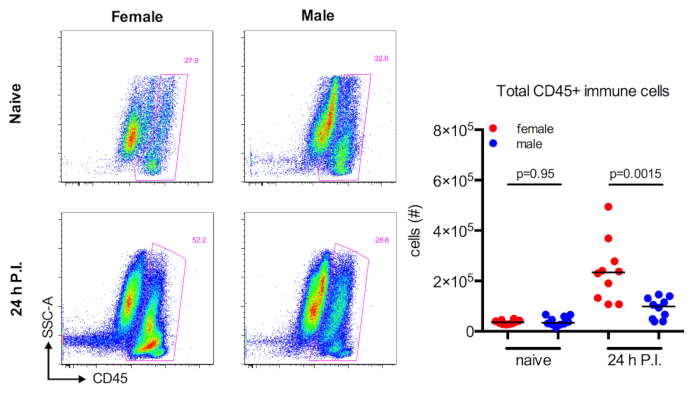A subscription to JoVE is required to view this content. Sign in or start your free trial.
Quantifying Immune Cell Infiltration in Uropathogenic E. coli-Infected Mouse Bladder Tissue using Flow Cytometry
Overview
In this video, we demonstrate a flow-cytometry-based technique to quantify CD45+ immune cells in Escherichia coli-infected mouse bladder to measure immune cell infiltration.
Protocol
All procedures involving animal models have been reviewed by the local institutional animal care committee and the JoVE veterinary review board.
1. Flow Cytometric Analysis of Bladder Tissue
- Prepare digestion buffer containing collagenase at 34 units/mL and DNase at 100 µg/mL, in PBS. Keep on ice. Prepare one 15 ml conical tube per animal to be analyzed and aliquot 1 ml digestion buffer per tube.
- At predetermined time points, sacrifi.......
Representative Results

Figure 1: Immune Cell Infiltration is Increased in Female Mice in Response to UTI. Six- to eight-week-old female and male C57Bl/6 mice were instilled or not with 107 CFU of UPEC. Representative dot plots depict total bladder cells with CD45+ immune cells gated in pink from naïve or infected mice. The graph shows the absolute number of CD45+ i.......
This article has been published
Video Coming Soon
Source: Zychlinsky Scharff, A. et al., Urinary Tract Infection in a Small Animal Model: Transurethral Catheterization of Male and Female Mice. J. Vis. Exp. (2017)
ABOUT JoVE
Copyright © 2025 MyJoVE Corporation. All rights reserved